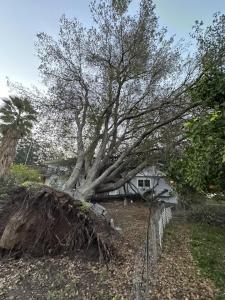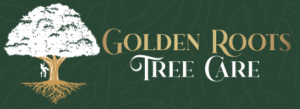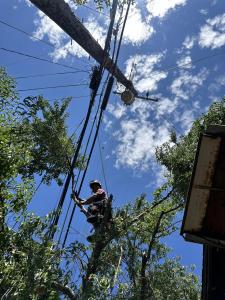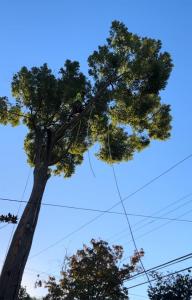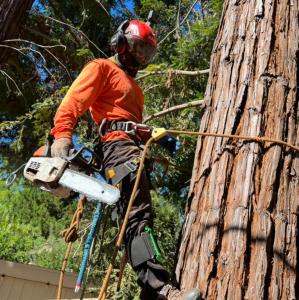Golden Roots Tree Care Urges Sacramento Homeowners to Prepare for Winter Storms; Free Tree Risk Assessment Guide
Arborists release a free guide on the 'Top 3 Warning Signs' of tree failure to help Sacramento homeowners prevent storm damage.
SACRAMENTO, CA, UNITED STATES, October 29, 2025 /EINPresswire.com/ -- As Sacramento residents brace for the first significant Pacific storms of the season, local experts at Golden Roots Tree Care are issuing a critical public safety advisory urging homeowners to inspect their property for hazardous trees. With late fall and winter historically marking the start of high-wind events and potential atmospheric rivers, the company is offering a free "How to Spot a Dangerous Tree: The Homeowner’s 10-Minute Pre-Storm Checklist" to help residents identify potential dangers before they result in catastrophic property damage or personal injury.
Sacramento, renowned as the "City of Trees," boasts a beautiful and mature urban canopy. However, this same asset, which provides shade and character, becomes a significant liability as the winter storm season approaches. The region's weather pattern—characterized by long, dry summers followed by sudden, intense saturation and high-velocity winds—creates a "perfect storm" for tree failure.
"We love our trees in Sacramento, but our unique climate is incredibly taxing on them," says Carlos Sanchez, founder of Golden Roots Tree Care and an International Society of Arboriculture (ISA) Certified Arborist. "Trees that were drought-stressed all summer suddenly have their roots swimming in water, while their canopies, many still holding leaves, act like giant sails in the wind. The combination of saturated soil, which offers far less anchoring support, and powerful wind gusts places enormous stress on a tree's entire structure. It's a recipe for disaster if that tree is already compromised."
While many homeowners may be unaware of the danger lurking in their own yards, Golden Roots Tree Care emphasizes that most tree failures are predictable and, more importantly, preventable.
"A tree very rarely fails without warning," Sanchez continues. "The problem is that most people simply don't know what to look for. They see a big, beautiful tree, but a trained arborist sees a structural defect or a health issue that could lead to a catastrophic break. Our goal is to educate homeowners so they can spot these red flags early, before the first big storm hits."
To aid residents, Golden Roots Tree Care has outlined the top warning signs that a tree may be at high risk of failure.
________________________________________
Top 3 Warning Signs a Tree is a Hazard
1. The 'Three D's': Dead, Damaged, or Diseased Wood. This is the most obvious and common warning sign. Homeowners should scan their trees for branches that are bare of leaves when the rest of the tree is full, branches that have broken off and are hanging (infamously known as "widow-makers"), or limbs with significant peeling bark or visible fungus.
"Dead wood is brittle, has no flexibility, and is the first thing to snap in a high wind," explains Sanchez. "Furthermore, dead branches are open wounds, serving as a primary entry point for wood-boring insects and decay-causing fungi. These issues can then spread to the healthy parts of the tree, compromising its entire structure from the inside out. Don't ignore hanging branches; they are a clear and present danger. Proper pruning by a certified professional, known as 'crown cleaning,' removes this deadwood and strategically thins the canopy to reduce wind resistance, significantly lowering the risk of failure."
2. A Significant Lean or Heaving Soil Many trees grow with a natural, gentle lean toward the light, which is not necessarily a problem. The danger sign is a new or sudden lean, or a tree that has begun to lean more severely over a short period. This often indicates root failure.
Homeowners should inspect the base of the tree. If the ground on the side opposite the lean appears to be mounding up, heaving, or cracking, it is a critical sign of root plate lifting.
"This means the tree is actively in the process of uprooting," warns Sanchez. "When the ground becomes saturated, the roots can literally lose their grip. If you see cracks in the soil radiating from the base, or the ground looks like it's being pushed up, you should call a certified arborist for an emergency assessment immediately. That tree may be failing from the ground up."
3. Visible Decay, Cavities, or Fungi Decay is, in simple terms, tree cancer. It compromises the structural wood that holds the tree up. Homeowners should look for cavities (hollows) in the trunk or on major limbs, deep vertical cracks (especially those that penetrate past the bark), or areas of soft, spongy wood.
A key indicator of advanced internal rot is the presence of fungal "conks" or mushrooms growing on the trunk, at the base (root flare), or on major exposed roots.
Sanchez notes, "People often think a little hollow is charming, but it's often the only external symptom of a much bigger internal problem. A tree can look perfectly healthy on the outside, with a full green canopy, but be structurally hollow. By the time you see large fungal conks growing on the trunk, the internal decay is often extensive. We have specialized tools to assess the extent of this internal decay, but the most important visual cue for the homeowner is the fungus itself."
________________________________________
Beyond the Top 3: Other Critical Signs
Golden Roots Tree Care also advises homeowners to be aware of two other subtle but serious hazards:
• Critical Root Zone Issues: Any recent construction, digging, or trenching near the tree can be a death sentence. "Did you have a new sprinkler system installed? Did you repave your driveway or do a foundation repair?" asks Sanchez. "Any soil compaction or digging within the 'drip line'—the area under the tree's canopy—can sever or suffocate major anchoring roots. It might take a year or two, but the damage will eventually show, and it often manifests as dieback in the canopy or a sudden failure in a storm because the root system is critically compromised."
• Poor Structure and Weak Attachments: A tree's overall architecture is key. Homeowners should look for "co-dominant stems," which appear as "V-shaped" attachments where two or more large stems grow closely together. "These 'V-shaped' unions are inherently weak," says Sanchez. "They often trap bark and water, leading to decay deep within the union. In a high wind, the tree is forced to 'choose' which stem to keep, and it will often split right down the middle. This is very common in Sacramento and can often be mitigated with professional cabling or bracing before the storm, but it has to be identified first."
Free Checklist Empowers Homeowners
To help homeowners navigate this inspection, Golden Roots Tree Care has developed a complimentary "How to Spot a Dangerous Tree: The Homeowner’s 10-Minute Pre-Storm Checklist." The easy-to-use guide details the inspection process, includes visual examples of what to look for, and provides a simple system to help residents determine if a tree is low-risk, needs monitoring, or requires an immediate professional consultation.
"We want to empower homeowners," says Sanchez. "This checklist is a simple tool anyone can use to take a 10-minute walk around their property and make an informed decision. It's a free, actionable first step toward peace of mind this storm season."
The free "How to Spot a Dangerous Tree: The Homeowner’s 10-Minute Pre-Storm Checklist" is available for immediate download at: https://goldenrootstree.com/how-to-spot-a-dangerous-tree
Carlos Sanchez also stresses the importance of hiring an ISA Certified Arborist rather than an uncredentialed tree trimmer for any assessment or work.
"There's a huge difference. A certified arborist is a trained professional who understands the biology, physics, and health of a tree. We are required to pass a comprehensive exam and maintain our certification with ongoing education. We are trained in advanced risk assessment and follow industry-standard safety protocols (ANSI Z133). A 'tree guy' with a chainsaw might be able to cut a branch, but an arborist can tell you why it needs to be cut, how to cut it to protect the tree's long-term health, and whether the tree can be saved at all. When it comes to the safety of your home and family, you want a diagnosis from a 'tree doctor,' not just a 'tree cutter.'"
About Golden Roots Tree Care
Founded in 2021, Golden Roots Tree Care is a premier, locally-owned tree service provider dedicated to the health, safety, and preservation of the Sacramento-area urban canopy. Staffed by a team of ISA Certified Arborists, the company is committed to scientifically-backed arboricultural care. They offer a comprehensive range of services, including expert pruning, hazard tree risk assessment, complex tree removals, storm damage response, and proactive Plant Health Care (PHC). Golden Roots Tree Care is fully licensed and insured, providing safe, professional, and reliable service to residential and commercial clients throughout the greater Sacramento region.
Luis Chavez
Chavez Web Design, LLC
+1 559-553-5000
email us here
Visit us on social media:
Instagram
Facebook
Legal Disclaimer:
EIN Presswire provides this news content "as is" without warranty of any kind. We do not accept any responsibility or liability for the accuracy, content, images, videos, licenses, completeness, legality, or reliability of the information contained in this article. If you have any complaints or copyright issues related to this article, kindly contact the author above.
